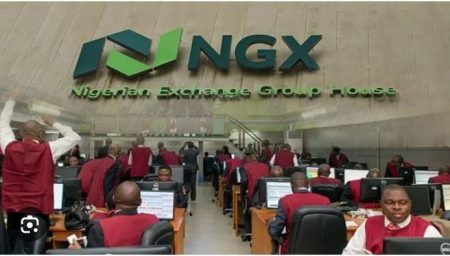The Dire State of Insurance Penetration in Nigeria: A Multifaceted Challenge
The Nigerian insurance sector faces a significant challenge: remarkably low penetration. Fewer than two million Nigerians, out of a population exceeding 200 million, purchase insurance policies annually. This stark reality highlights a critical gap in both insurance coverage and awareness among the populace. This issue came to the forefront during a recent Investment Summit held in Lagos, where stakeholders dissected the underlying causes and potential solutions for this pervasive problem. The discussions revealed a complex interplay of factors contributing to the low uptake of insurance, including limited disposable income, product mismatch, distribution challenges, lack of financial literacy, and the allure of high-risk investment schemes.
Economic Constraints and Product Relevance:
A primary obstacle lies in the economic realities faced by a significant portion of the Nigerian population. Many, especially in rural areas where a large percentage of the population resides, struggle with limited disposable income. The agricultural sector, the largest employer outside of government, typically yields modest incomes. Furthermore, current insurance products often fail to resonate with the needs of this demographic. Traditional offerings like car and home insurance are irrelevant to those who lack these assets. While life insurance has seen some growth, it hasn’t bridged the coverage gap effectively. Micro-insurance, designed for low-income earners, faces implementation challenges, primarily concerning distribution and agent compensation for selling low-premium policies.
The Role of Trust, Education, and Access:
Beyond economic constraints, the low insurance penetration is also influenced by a lack of trust, financial education, and access. Past experiences with fraudulent investment schemes have eroded public trust in financial institutions. Many Nigerians lack basic financial literacy, hindering their understanding of insurance and its benefits. This lack of awareness contributes to the misconception that financial planning is exclusively for the wealthy. Even with awareness and trust, access to suitable insurance products can be challenging, particularly for those in remote areas or with limited digital access. Promoting accessible and affordable insurance options, alongside targeted financial literacy initiatives, is crucial to addressing this challenge.
Leveraging Technology for Enhanced Distribution and Education:
Technology emerges as a crucial tool for overcoming the challenges of distribution and awareness. Digital platforms can reach a wider audience, especially in underserved areas, reducing reliance on traditional agent networks. Online platforms can offer simplified product information, educational resources, and streamlined purchasing processes, making insurance more accessible and understandable. These platforms also facilitate micro-insurance distribution, overcoming the challenges of cost-effective agent compensation for low-premium policies. By leveraging technology, the insurance sector can connect with a broader market and promote financial inclusion.
The Intertwined Nature of Investment and Insurance:
The Investment Summit highlighted the essential link between investment and insurance. Sound investment strategies should be underpinned by appropriate insurance coverage to mitigate risks. Participants emphasized that every investment should be accompanied by a corresponding insurance policy to protect against potential losses. This underlines the importance of integrating financial literacy education that encompasses both investment and insurance principles. Educating the public about the symbiotic relationship between these two financial instruments is crucial for promoting responsible financial planning.
Addressing the Challenges in the Investment Landscape:
Beyond insurance-specific challenges, the summit also addressed broader issues within the investment landscape. Lack of information and education regarding investment opportunities, infrastructure gaps, regulatory complexities, the prevalence of get-rich-quick schemes, and security concerns all contribute to a challenging investment environment. These factors discourage individuals from engaging in formal investment channels, pushing them towards informal, and often risky, alternatives. Addressing these systemic issues requires a multi-pronged approach involving government initiatives, industry collaboration, and public awareness campaigns.
A Call for Collaborative Action:
The low insurance penetration in Nigeria demands a collaborative effort from all stakeholders. The insurance industry must develop products tailored to the needs and financial capabilities of the diverse Nigerian population. Government agencies need to strengthen regulatory frameworks and promote financial literacy initiatives. Technological advancements should be harnessed to enhance distribution and accessibility. Ultimately, fostering a culture of financial responsibility and awareness is crucial for increasing insurance penetration and promoting financial well-being across the nation. This requires sustained efforts from insurers, regulators, educators, and the media to empower individuals to make informed financial decisions.














